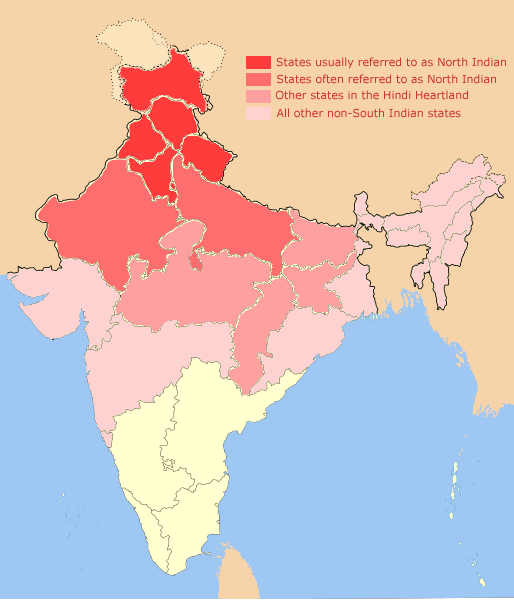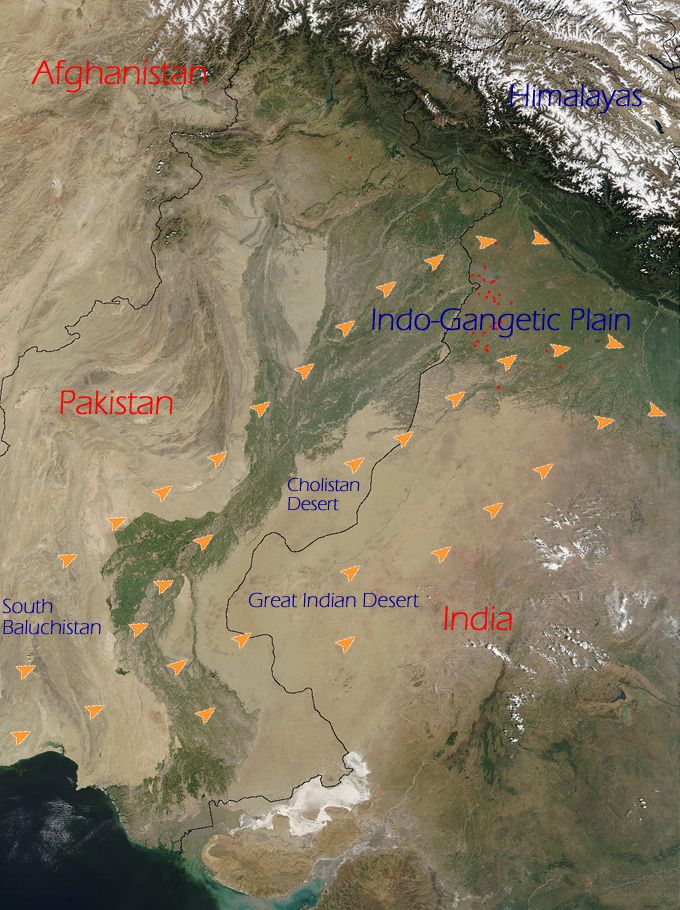|
Roshandan
A roshandan (Hindustani language, Hindi/Urdu: रोशनदान or روشندان) is a feature of many dwelling structures in North India and Pakistan that is a combined skylight and ventilating window. ''Roshandans'' are usually located high on a room's walls, and often on top of windows. They are essentially smaller windows that swivel open when needed. Smaller ''roshandans'' are sometimes called ''roshandanis''. The high location of ''roshandans'' means that, for part of the summer (except for the months when the Loo (wind), Loo winds blow in the region), they can be kept open to allow heated air just below the ceiling to escape while retaining relatively cooler air inside. In wintertime, they are kept shut and used purely as skylights. Etymology The term ''roshandan'' literally means "that which has/admits light" in several Indo-Aryan languages, Indo-Aryan languages, derived from Persian language, Persian. Though the word ''roshandan'' is often translated to ''ventilator'' i ... [...More Info...] [...Related Items...] OR: [Wikipedia] [Google] [Baidu] |
Skylight
A skylight (sometimes called a rooflight) is a light-permitting structure or window, usually made of transparent or translucent glass, that forms all or part of the roof space of a building for daylighting and ventilation purposes. History Open skylights were used in Ancient Roman architecture, such as the oculus of the Pantheon. Glazed 'closed' skylights have been in use since the Industrial Revolution made advances in glass production manufacturing. Mass production units since the mid-20th century have brought skylights to many uses and contexts. Energy conservation has brought new motivation, design innovation, transmission options, and efficiency rating systems for skylights. Prior to the Industrial Revolution, it was Spain and France that probably had the leading technology in architectural glass. One of the earliest forms of glass skylight can be seen at the Burgos Cathedral in the Chapel of the Constable. Other early form of glass skylight can be seen at the Pal ... [...More Info...] [...Related Items...] OR: [Wikipedia] [Google] [Baidu] |
Hindustani Language
Hindustani (; Devanagari: , * * * * ; Perso-Arabic: , , ) is the ''lingua franca'' of Northern and Central India and Pakistan. Hindustani is a pluricentric language with two standard registers, known as Hindi and Urdu. Thus, the language is sometimes called Hindi–Urdu. Despite these standard registers, colloquial speech in Hindustani often exists on a spectrum between these standards. Ancestors of the language were known as ''Hindui'', ''Hindavi'', ''Zabān-e Hind'' (), ''Zabān-e Hindustan'' (), ''Hindustan ki boli'' (), Rekhta, and Hindi. Its regional dialects became known as ''Zabān-e Dakhani'' in southern India, ''Zabān-e Gujari'' () in Gujarat, and as ''Zabān-e Dehlavi'' or Urdu around Delhi. It is an Indo-Aryan language, deriving its base primarily from the Western Hindi dialect of Delhi, also known as Khariboli. Hindustani is a pluricentric language, best characterised as a continuum between two standardised registers: Modern Standard Hindi an ... [...More Info...] [...Related Items...] OR: [Wikipedia] [Google] [Baidu] |
North India
North India is a loosely defined region consisting of the northern part of India. The dominant geographical features of North India are the Indo-Gangetic Plain and the Himalayas, which demarcate the region from the Tibetan Plateau and Central Asia. The term North India has varying definitions. The Ministry of Home Affairs in its Northern Zonal Council Administrative division included the states of Haryana, Himachal Pradesh, Punjab and Rajasthan and Union Territories of Chandigarh, Delhi, Jammu and Kashmir and Ladakh. The Ministry of Culture in its ''North Culture Zone'' includes the state of Uttarakhand but excludes Delhi whereas the Geological Survey of India includes Uttar Pradesh and Delhi but excludes Rajasthan and Chandigarh. Other states sometimes included are Bihar, Gujarat, Jharkhand, Madhya Pradesh and West Bengal. North India has been the historical centre of the Mughal Empire, the Delhi Sultanate and the British Indian Empire. It has a diverse c ... [...More Info...] [...Related Items...] OR: [Wikipedia] [Google] [Baidu] |
Pakistan
Pakistan ( ur, ), officially the Islamic Republic of Pakistan ( ur, , label=none), is a country in South Asia. It is the world's List of countries and dependencies by population, fifth-most populous country, with a population of almost 243 million people, and has the world's Islam by country#Countries, second-largest Muslim population just behind Indonesia. Pakistan is the List of countries and dependencies by area, 33rd-largest country in the world by area and 2nd largest in South Asia, spanning . It has a coastline along the Arabian Sea and Gulf of Oman in the south, and is bordered by India to India–Pakistan border, the east, Afghanistan to Durand Line, the west, Iran to Iran–Pakistan border, the southwest, and China to China–Pakistan border, the northeast. It is separated narrowly from Tajikistan by Afghanistan's Wakhan Corridor in the north, and also shares a maritime border with Oman. Islamabad is the nation's capital, while Karachi is its largest city and fina ... [...More Info...] [...Related Items...] OR: [Wikipedia] [Google] [Baidu] |
Loo (wind)
The Loo ( hi, लू, Urdu: لو) is a strong, dusty, gusty, hot and dry summer wind from the west which blows over the Indo-Gangetic Plain region of North India and Pakistan. It is especially strong in the months of May and June. Due to its very high temperatures (45 °C–50 °C or 115 °F–120 °F), exposure to it often leads to fatal heatstrokes. Since it causes extremely low humidity and high temperatures, the ''Loo'' also has a severe drying effect on vegetation leading to widespread browning in the areas affected by it during the months of May and June. Origin and ending The Loo mainly originates in the large desert regions of the northwestern Indian subcontinent: the Great Indian Desert, the Cholistan Desert and the desert areas of Southern Balochistan. The Loo ends in late summer, with the arrival of the Indian monsoon. In some areas of North India and Pakistan, there are brief, but violent, dust storms known as Kali Andhi (or ''black Storm'') ... [...More Info...] [...Related Items...] OR: [Wikipedia] [Google] [Baidu] |
Indo-Aryan Languages
The Indo-Aryan languages (or sometimes Indic languages) are a branch of the Indo-Iranian languages in the Indo-European language family. As of the early 21st century, they have more than 800 million speakers, primarily concentrated in India, Pakistan, Bangladesh, Nepal, Sri Lanka, and Maldives. Moreover, apart from the Indian subcontinent, large immigrant and expatriate Indo-Aryan–speaking communities live in Northwestern Europe, Western Asia, North America, the Caribbean, Southeast Africa, Polynesia and Australia, along with several million speakers of Romani languages primarily concentrated in Southeastern Europe. There are over 200 known Indo-Aryan languages. Modern Indo-Aryan languages descend from Old Indo-Aryan languages such as early Vedic Sanskrit, through Middle Indo-Aryan languages (or Prakrits). The largest such languages in terms of first-speakers are Hindi–Urdu (),Standard Hindi first language: 260.3 million (2001), as second language: 120 million (199 ... [...More Info...] [...Related Items...] OR: [Wikipedia] [Google] [Baidu] |
Persian Language
Persian (), also known by its endonym and exonym, endonym Farsi (, ', ), is a Western Iranian languages, Western Iranian language belonging to the Iranian languages, Iranian branch of the Indo-Iranian languages, Indo-Iranian subdivision of the Indo-European languages. Persian is a pluricentric language predominantly spoken and used officially within Iran, Afghanistan, and Tajikistan in three mutual intelligibility, mutually intelligible standard language, standard varieties, namely Iranian Persian (officially known as ''Persian''), Dari, Dari Persian (officially known as ''Dari'' since 1964) and Tajik language, Tajiki Persian (officially known as ''Tajik'' since 1999).Siddikzoda, S. "Tajik Language: Farsi or not Farsi?" in ''Media Insight Central Asia #27'', August 2002. It is also spoken natively in the Tajik variety by a significant population within Uzbekistan, as well as within other regions with a Persianate society, Persianate history in the cultural sphere of Greater Ira ... [...More Info...] [...Related Items...] OR: [Wikipedia] [Google] [Baidu] |
English Language
English is a West Germanic language of the Indo-European language family, with its earliest forms spoken by the inhabitants of early medieval England. It is named after the Angles, one of the ancient Germanic peoples that migrated to the island of Great Britain. Existing on a dialect continuum with Scots, and then closest related to the Low Saxon and Frisian languages, English is genealogically West Germanic. However, its vocabulary is also distinctively influenced by dialects of France (about 29% of Modern English words) and Latin (also about 29%), plus some grammar and a small amount of core vocabulary influenced by Old Norse (a North Germanic language). Speakers of English are called Anglophones. The earliest forms of English, collectively known as Old English, evolved from a group of West Germanic ( Ingvaeonic) dialects brought to Great Britain by Anglo-Saxon settlers in the 5th century and further mutated by Norse-speaking Viking settlers starting in ... [...More Info...] [...Related Items...] OR: [Wikipedia] [Google] [Baidu] |
Indian Subcontinent
The Indian subcontinent is a physiographical region in Southern Asia. It is situated on the Indian Plate, projecting southwards into the Indian Ocean from the Himalayas. Geopolitically, it includes the countries of Bangladesh, Bhutan, India, Maldives, Nepal, Pakistan, and Sri Lanka."Indian subcontinent". '' New Oxford Dictionary of English'' () New York: Oxford University Press, 2001; p. 929: "the part of Asia south of the Himalayas which forms a peninsula extending into the Indian Ocean, between the Arabian Sea and the Bay of Bengal. Historically forming the whole territory of Greater India, the region is now divided into three countries named Bangladesh, India and Pakistan." The terms ''Indian subcontinent'' and ''South Asia'' are often used interchangeably to denote the region, although the geopolitical term of South Asia frequently includes Afghanistan, which may otherwise be classified as Central Asian.John McLeod, The history of India', page 1, Greenwood Publishing ... [...More Info...] [...Related Items...] OR: [Wikipedia] [Google] [Baidu] |
Architecture In India
Architecture is the art and technique of designing and building, as distinguished from the skills associated with construction. It is both the process and the product of sketching, conceiving, planning, designing, and constructing buildings or other structures. The term comes ; ; . Architectural works, in the material form of buildings, are often perceived as cultural symbols and as works of art. Historical civilizations are often identified with their surviving architectural achievements. The practice, which began in the prehistoric era, has been used as a way of expressing culture for civilizations on all seven continents. For this reason, architecture is considered to be a form of art. Texts on architecture have been written since ancient times. The earliest surviving text on architectural theories is the 1st century AD treatise ''De architectura'' by the Roman architect Vitruvius, according to whom a good building embodies , and (durability, utility, and beauty) ... [...More Info...] [...Related Items...] OR: [Wikipedia] [Google] [Baidu] |
.jpg)






